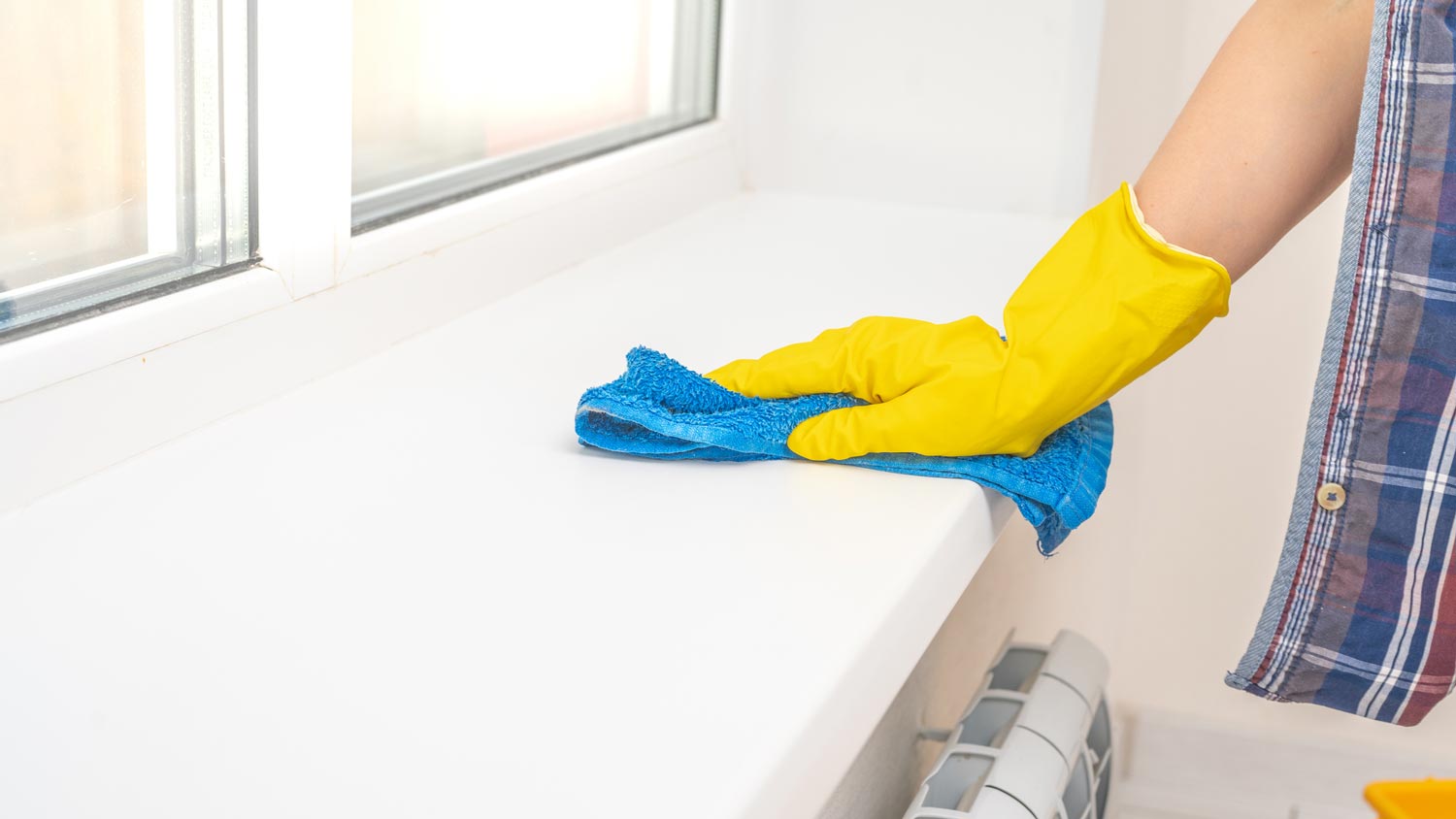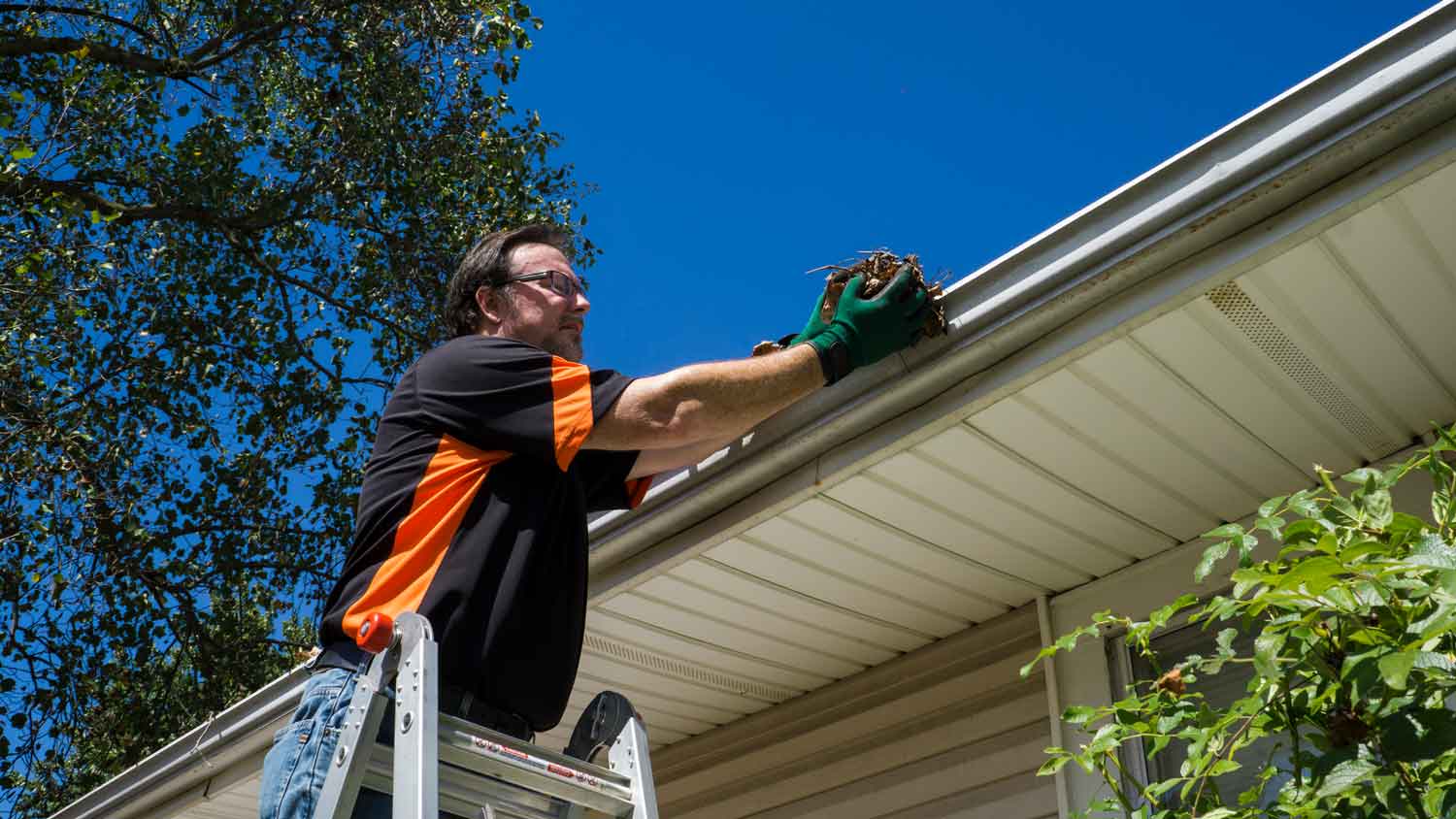What to Do When Your Basement Floods From Rain: 11 Tips
How to make that rain, rain, go away


Those soaking summer storms provide great ambience—at least when you’re cuddled up safe on the couch. But when the rain gets too fast and too furious, your basement is at serious risk of flooding. Here are 11 things you need to do when your basement floods from rain so you can get back to living in a clean, dry home.
1. Check Gas and Electricity
Before you do anything else, keep yourself and your family safe by turning off the gas and electricity before inspecting the basement. Rising floodwaters can extinguish pilot lights on water heaters and other appliances, allowing dangerous natural gas to build up, which could cause a fire or explosion. Electricity, when combined with floodwaters, poses a serious risk of electrical shock, which could be dangerous or even fatal.
Grab a flashlight, put on rubber boots and gloves, and get your phone or digital camera. Also, watch your step, especially if the water’s deep.
If you see any sparking electricity near standing water, leave the area immediately and call an electrician. Also, never stand in flood water while your home’s electricity is still on. Additionally, if you suspect that natural gas might have already begun leaking, leave your home immediately and call 911.
2. Move Valuables to Higher Ground
Move quickly to protect your valuables. Water can cause lasting damage to photos, paperwork, and family heirlooms, so move the irreplaceable items first.
Wet cardboard boxes disintegrate quickly, so don’t bother to save them. And beware of wet carpeting, rugs, soft furnishings, or clothes—they’re especially susceptible to mold and mildew from flooded basements. Move and dry what you can; the rest you’ll tackle in a later step.
3. Take Pictures

Use your phone to take photos and videos to document the damage. If you choose to file a homeowners insurance claim later, your insurance adjuster may want to see pics, so make sure to capture everything clearly: floors, walls, windows, appliances, and storage, for starters.
4. Call Your Insurance Company
Speaking of homeowners insurance, basement floods aren’t always covered by a homeowners policy, unfortunately. While policies often cover water damage, such as from a broken pipe, floods from groundwater may not be covered unless you have a separate flood insurance policy (and even those may not cover below-grade spaces).
Call your insurance company to get the specifics on your policy and to start the claim process, if it applies. Even if you didn’t buy a house in a flood zone, knowing your flood coverage is important.
5. Remove the Water
With the prep work out of the way, it’s time to bail—literally. How you remove the standing water depends on how much there is. If you have a sump pump that failed, you may consider renting a gas-powered basement pump to move large amounts of water quickly. You can also start removing water with a wet-dry vac or even just a mop and towels. For tough jobs or heavy damage, consider calling on a local water damage restoration company for help.
As you remove the water, evaluate what remains. You may need to chuck flooring, carpeting, or even drywall that has been soaked past the point of saving. While it might pain you to throw these things away, it’s the best way to outsmart the type of fungus that thrives on wet materials and can seriously negatively impact you and your family’s health.
6. Dry It Out
With the bulk of the water gone and wet items removed, it’s turbo time. Set up fans (preferably several) to get as much airflow as possible moving through the basement to evaporate the remaining moisture. Add a dehumidifier if you can; it can address any remaining humidity and prevent mold from moving in. Check the filter and empty the drainage pan frequently as you continue the drying process.
7. Sanitize Surfaces

When everything is dry, clean and sanitize the floors and walls. You can make a sanitizing solution with 1 cup of bleach to 1 gallon of water. Put on a face mask and scrub thoroughly, making sure you’re still wearing rubber gloves, too. Ventilate the room so that the chlorine vapors can dissipate. The bleach should help prevent mold spores from growing.
You might also want to add an air purifier with a HEPA filter to the basement to remove mold, mildew, and bacteria from the air so that it doesn’t circulate and land on your surfaces.
8. Check Drains
Before you begin putting your belongings back in place, check your drains for clogs. Remove the drain screen and clean it thoroughly. If the flood caused a clog, you may need to snake the drain. Also, check your French drains, if applicable; basement French drains last several decades but not forever. If they’re older than 30 or 40 years, you may need to replace them.
If faulty drains contributed to your basement flooding, plan to repair them immediately before the next big storm sweeps through.
9. Restore Possessions
Now that your basement is clean, clear, and under control, you can put your belongings back. This is a good time to reconsider what and how you store your belongings in the basement. Items like priceless heirlooms, family photo albums, and seasonal clothing might fare better in a closet, safe deposit box, or climate-controlled storage unit rather than in your basement.
For what does stay, try elevating your belongings off the floor using concrete blocks, bricks, or shelving. Plastic tote bins will survive another flood event better than cardboard boxes. (And maybe it’s time to see whether those old sweaters really do spark joy or if it’s finally time to give them the old heave-ho.)
10. Address the Root Cause

Now that the storm has passed and you’ve cleaned up, you’re probably not eager to experience another flood anytime soon. This is the time to address the root problem that led to the flooding and take steps to prevent it from happening again.
If you can do so safely, grab a sturdy ladder and check your gutters. Clogged and overloaded gutters won’t drain rainwater properly and can lead to excess water around your foundation. Clear them out if necessary (or call in a pro to help). Also check the downspouts to be sure they’re connected properly, running clear, and not blocked at the end. Downspouts should direct rainwater at least 5 feet away from the foundation.
You’ll also want to make sure that the soil surrounding the house is graded away from the home properly to let groundwater drain freely away from the home instead of soaking your foundation. Lastly, take a look at your window wells and the foundation itself to make sure they’re in good condition—there should be no cracks, leaks, or bowing.
If you spot a problem, take swift action to prevent it from getting worse. Repairs and regular maintenance will go a long way toward making sure the next storm stays outside of your home. Consider installing a storm door and storm windows as well, to provide more protection.
11. Check Your Sump Pump
If everything is solid and secure, the last thing to check is your sump pump. Replace it if necessary; most sump pumps only have a life span of five to seven years, so it could be time. You might even consider a backup sump pump (or two) if flooding has been a real problem in your home.
And while you have your home insurance paperwork out, call and ask whether you can add a sump pump failure rider. This addendum to your homeowners insurance policy could help cover your damages if another flood happens in the future.
DIY vs. Hiring a Pro to Waterproof Your Basement
Waterproofing your basement is a challenging task. While you may be tempted to patch up the water leaks using hydraulic cement or silicon sealant, that is merely a bandaid solution that does not completely solve the problem.
In most cases, waterproofing requires advanced expertise and can become a comprehensive project. Therefore, it is best to hire a waterproofing pro to get the job done right and receive lasting waterproofing results. To make the best use of your budget, speak with multiple pros and compare their quotes, after-service options, financing possibilities, and company credentials to find the best match for your needs.
Questions to Ask a Basement Waterproofing Pro
Screening is crucial in finding the right contractor to handle your basement waterproofing needs. Here are a few questions to ask over the phone before you have someone inspect your basement:
Do you offer free inspections?
Based on what I described to you, how long do you think this will take?
Do you have any financing options?
Do you have a website or somewhere I can look at your past work and testimonials?
When is your earliest availability?
If everything seems good, you can have the pro take a look at your basement. When they’re onsite, you can ask more detailed questions, including:
What type of waterproofing do you recommend? Why?
Are there any alternatives?
How long will this last? Are there any warranties?
These questions will help you find the best match that works with your budget, needs, and schedule.





- 7 Reasons Water Is Seeping Through Your Basement Floor
- Top Reasons and Solutions for Basement Flooding
- How to Fix a Leaky Basement: 7 Tips
- 7 Reasons Why Water Is Rising Through Your Floor—And How to Fix Them
- How to Keep Your Basement Dry and Get Rid of Moisture
- 8 Tips for a Smooth DIY Basement Remodel, From Drainage to Drywall
- Why Your Basement Still Flooded With a Sump Pump
- How to Waterproof a Basement Like a Pro
- What to Do After Water Damage in Your House and Why Act Fast
- Water Damage Cleanup Guide: How to Restore Your Home Quickly After a Flood










